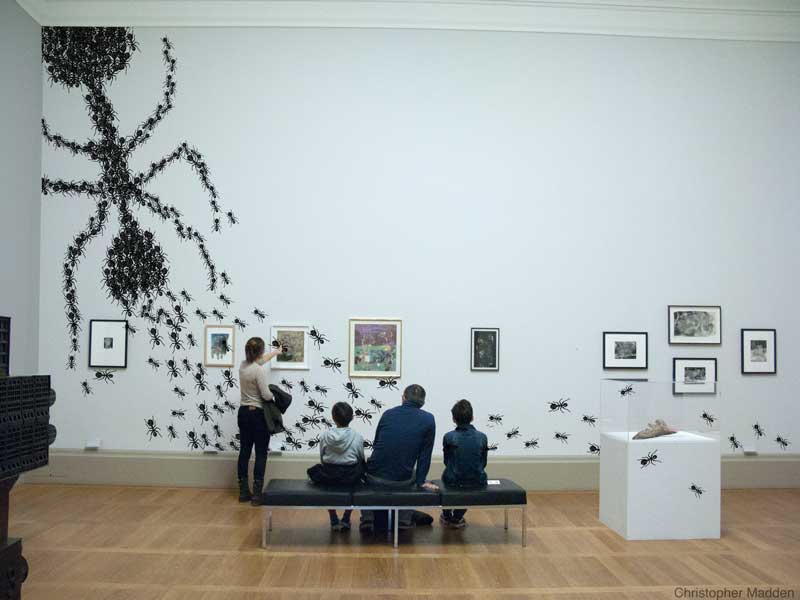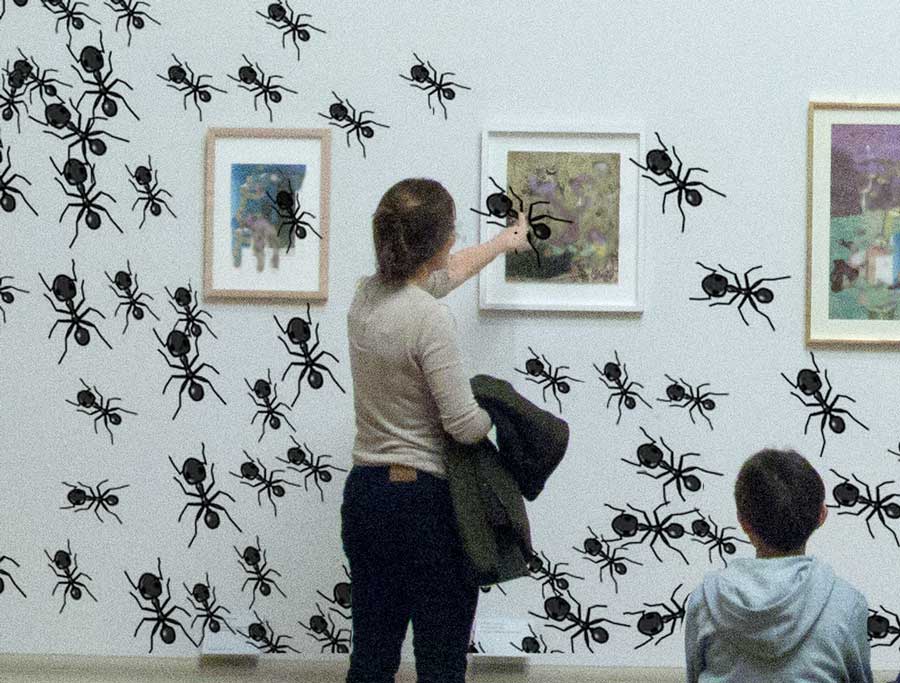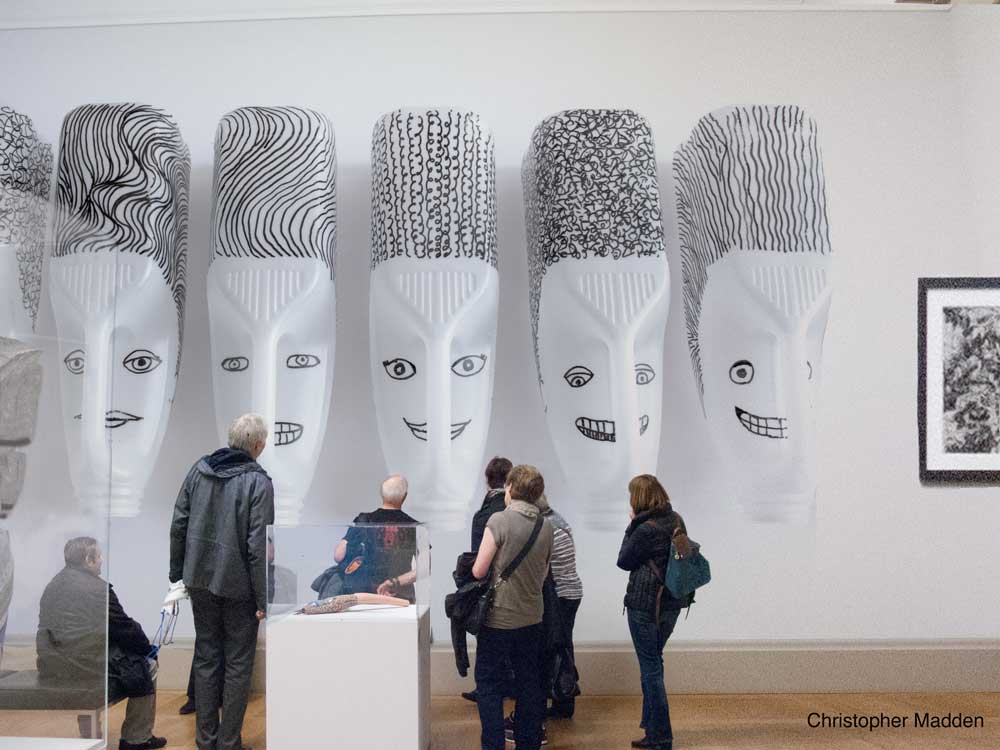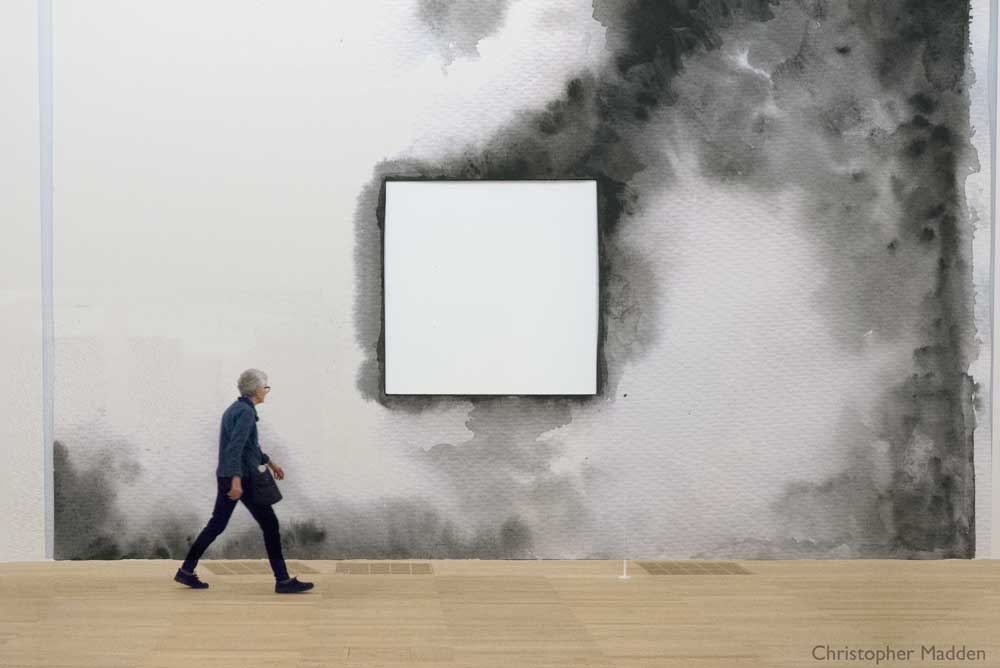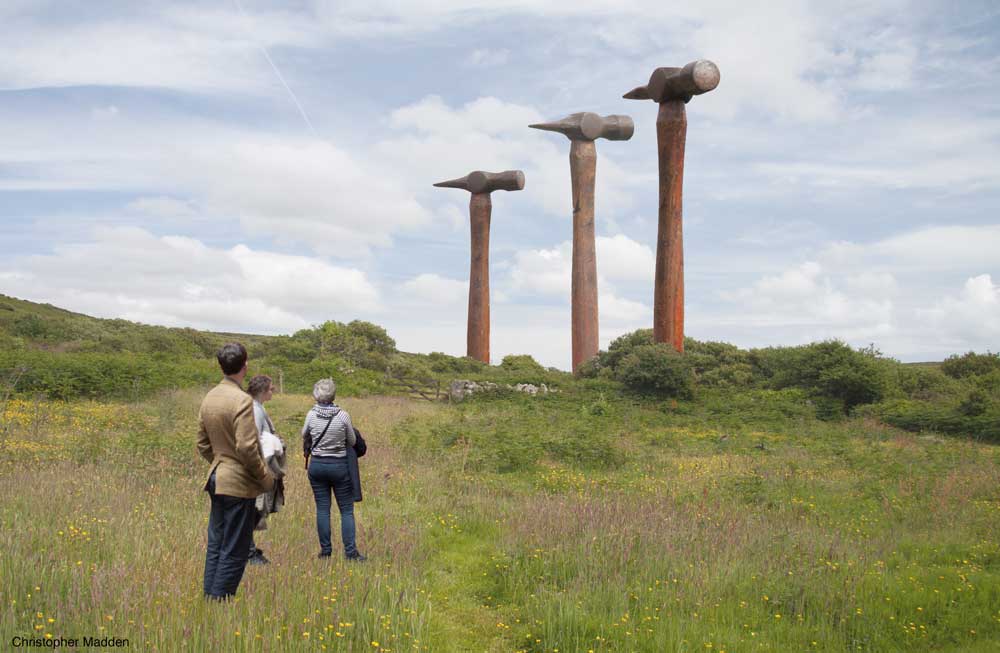
Visualisation of an art gallery wall mural proposal
Digital montage. March 2025
A visualisation of a proposal for a mural painted directly onto an art gallery wall.
The mural depicts a procession of people with extremely long legs.
A possible interpretation of the work is that the extreme height that the people have attained due to having such long legs comes at a price.
Physical height is usually thought of as being desirable in people as it is interpreted as a sign of power and strength.
However it has its drawbacks. Tall people tend not to live as long as shorter people, and in the case of the long-legged people in my image how on earth do they tie their shoe laces? Also, notice that they seem to need sticks to help them to keep their balance.
The physical height of the people can be taken to be a metaphor for power of more abstract forms, while the sticks that the people are using in order to keep themselves upright may be seen as metaphors for the methods which people in positions of power have to use in order to prop themselves up.
The mural in this montage was drawn on an iPad.






